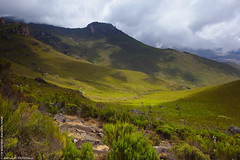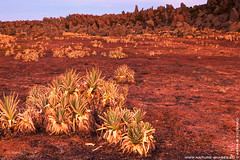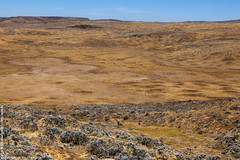Copycatted in USSR
January 30, 2015 Leave a comment
When I was browsing through reptile illustrations published in the Internet I stumbled upon an image that looked very familiar. It was a painting of an Agama with a caption in German telling “Felsenagame” (Rock Agama) under it.
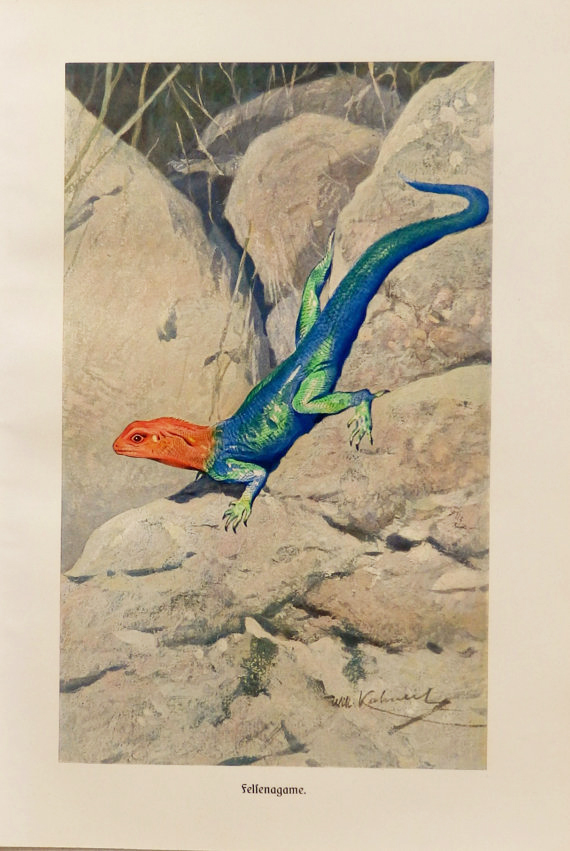
“Agama dodomae”, Brehms Tierleben, published by Bibliographisches Institut, Leipzig, Germany, 1911 (original title: Brehms Tierleben. Allgemeine Kunde des Tierreichs, Hrg. O. zur Strassen, Bd. 2, Leipzig, Bibliographisches Institut, 1911-1919)
In another book that was published later in Spain the same picture appeared but as illustration of a different species – Agama colonorum. According to the knowledge of that time, all African agamas with red head and blue body were of that species, also known as Agama agama. Therefore also A. dodomae was just a synonym accordingly.

“Agama colonorum”, colour print, Spain, publ. 1925
Apparently, the original German illustration was just reprinted in a Spanish book. I haven’t seen the book myself and even don’t know its title to check it, but the fact that the signature of the artist remained and the original wasn’t changed lets us assume that the painting was reprinted with permission or at least with reference to the source.
I own none of these two books and had never a chance to see them. I knew this agama illustration from somewhere else.

“Agama planiceps”, illustration from the book “Life of the Animals”, ed. L.A.Zenkevich, Vol. 4.2, Moscow, 1969. (original title: Жизнь животных. Земноводные. Пресмыкающиеся / под ред. Л.А.Зенкевича — 1-е изд. — М.: Просвещение, 1969. — Т. 4.2.)
Every person interested in nature science who was born in the Soviet Union knows the book “Жизнь животных” (“Life of the Animals”) in 6 volumes. The first edition of it appeared in 1950s-60s. The 2nd was published in 1970s-80s. I too got it from my parents (even both editions) and it was the first and maybe the most important zoology book in my life. I grew up with it.
The Soviet Life of the Animals was a reply to famous classical “Brehm’s Tierleben” (“Brehm’s Life of the Animals”). Its concept was somewhat different, however. While Brehm’s Life of the Animals was a popular book – written in a simple language and without too many scientific details – the Soviet counterpart was intended for a reader more involved into life science. Except the title it had no parallels with the German original. No content of Brehm’s book was (at least officially) translated and reprinted in it. In fact, the Soviet book offered more up-to-date knowledge in zoology, so the title was just a metaphor – a tribute to Alfred Brehm whose work was known in Russia too.
This book was illustrated by Nikolai Kondakov who was “the” zoology illustrator of the Soviet Union, Alexandr Kondratiev and Olga Khludova. Kondakov made almost all illustrations in such books. Since he illustrated other herpetological books I suspect that the agama picture in volume 4 (part 2) of Life of the Animals was also from him.
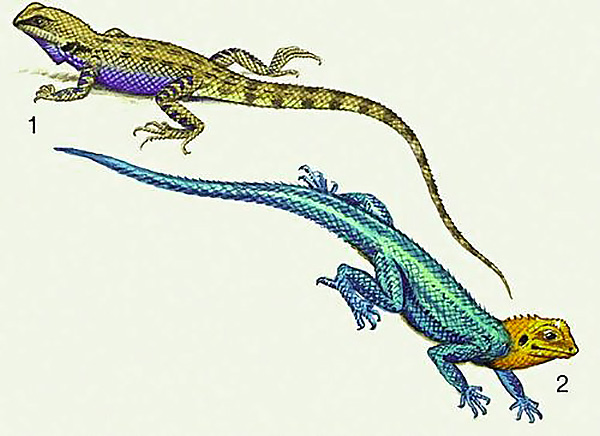
The Agama painting from the “Life of the Animals” got further remakes in later Soviet publications. In this one, for instance, the agama is hairy and smiling.
For his time and under the circumstances in his country Nikolai Nikolaevich Kondakov was really an outstanding painter and naturalist. There is no doubt that he was able to draw or paint himself and had some his own original artworks. Therefore my discovery is not only surprising but also disappointing.
Obviously, none of three Soviet illustrators could be the first who painted the agama because even the oldest of them, Kondakov, was 2 years old when the German illustration was published. Most probably they had access to the 1911 edition of Brehms Tierleben and just copied an illustration (maybe even several) from it. The illustrator even didn’t try to conceal the similarity with the origin and made only minor changes. Certainly, it is a plagiarism what we see here, and I keep wondering how it could happen at all. Was it the illustrator who didn’t mention the source, or the book editor, or the publisher?
It is unlikely that it was publisher’s policy. It is well known that copying “western” goods and know-how was an everyday practice in the USSR and the very idea of commercial copyright was absent. However, plagiarism was officially dispraised and regarded as unacceptable. Although omitting references in citations and even simple copying of parts of foreign publications were common and tolerated, presenting someone else’s work as own was officially not accepted and discouraged. Therefore, I doubt that the publisher just requested the illustrator to re-paint a picture created by another author even if the original wasn’t protected by any law.
Although the country was isolated and the access to foreign publications was extremely limited, the 1911 edition of Brehm’s Tierleben might be available even in some libraries in the Soviet Union because it had been published before the Revolution, so some copies should have remained. Therefore it is unlikely that the authors of the book could be sure that such plagiarism would remain unnoticed forever.
The biggest question for me is about the reason. Why the “great Soviet animal painter” Kondakov or anyone of his two colleagues needed to copy an illustration that was already very bad? Anyone who has seen an agama alive, preserved, or on a photograph, would recognise at once that even the original German picture is just terrible. Kondakov could create his own much better painting. Why didn’t he do it? As a zoologist and staff member of a large museum he certainly had access to preserved specimens of agamas. Of course, he had seen or could see agamas alive – in captivity or even in the wild. An agama has such a characteristic morphology that drawing it is very easy even for a less experienced artist. At the same time, many agamas have similar body shapes and morphological details, so that to illustrate a particular species the artist even doesn’t need to have a specimen of this species as a model. The result would have been better if Kondakov had made a general agama drawing based on any agama species that lived in the USSR and colourated it as Agama agama ssp..
Unfortunately, we will never get answers of these questions.
